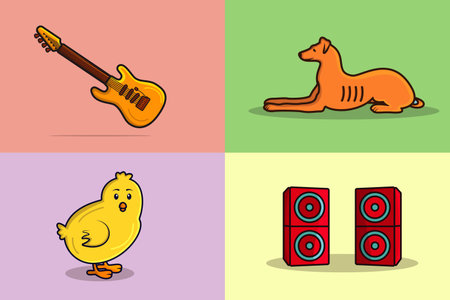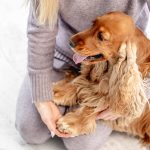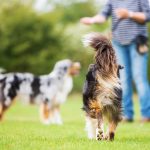1. Understanding Your Dog’s Nutritional Needs
Proper nutrition is essential for your dog’s overall health and well-being. Just like humans, dogs need a balanced diet that provides all the necessary nutrients to support their energy levels, immune system, and bodily functions. Understanding what nutrients your dog needs can help you make informed decisions about their diet.
Essential Nutrients for Dogs
Your dogs diet should include a balance of protein, fats, carbohydrates, vitamins, and minerals. Each of these plays a crucial role in maintaining their health.
Protein
Protein is one of the most important components of your dog’s diet. It helps build and repair tissues, supports muscle growth, and plays a key role in producing enzymes and hormones. High-quality protein sources include:
- Chicken
- Beef
- Fish
- Lamb
- Eggs
Fats
Fats provide energy and help maintain healthy skin and a shiny coat. They also support brain function and cell development. Good sources of healthy fats include:
- Fish oil
- Chicken fat
- Coconut oil
- Flaxseed oil
Carbohydrates
While not as essential as protein and fats, carbohydrates provide an additional source of energy and help with digestion. Some healthy carbohydrate sources are:
- Sweet potatoes
- Pumpkin
- Brown rice
- Pears and apples (in moderation)
Vitamins and Minerals
Your dog needs various vitamins and minerals to support different bodily functions. Here’s a breakdown of some key ones:
| Nutrient | Function | Main Sources |
|---|---|---|
| Vitamin A | Supports vision and immune health | Liver, carrots, spinach |
| B Vitamins | Aids metabolism and energy production | Poultry, fish, whole grains |
| Calcium | Keeps bones and teeth strong | Dairy products, leafy greens |
| Zinc | Aids in wound healing and immune function | Pumpkin seeds, beef, lamb |
| Iodine | Supports thyroid function | Kelp, fish, dairy products |
The Importance of a Balanced Diet
A well-balanced diet ensures that your dog gets all the nutrients they need to stay active and healthy. Feeding them high-quality food with the right mix of proteins, fats, carbs, vitamins, and minerals will help prevent deficiencies and health issues in the long run.
2. Choosing the Right Food: Kibble, Wet, Raw, or Homemade?
When it comes to feeding your dog, choosing the right type of food is essential for their health and well-being. There are several options available, each with its own benefits and drawbacks. The best choice depends on factors like your dogs age, breed, activity level, and any specific health conditions.
Kibble (Dry Food)
Kibble is one of the most popular choices among dog owners due to its convenience and affordability. It has a long shelf life and helps promote dental health by reducing plaque buildup.
Pros:
- Convenient and easy to store
- Cost-effective
- Supports dental health
- Available in various formulas for different needs
Cons:
- May contain preservatives and fillers
- Less moisture content, which can be an issue for hydration
- Lower palatability for some dogs
Wet Food (Canned)
Wet food contains more moisture, making it a good option for dogs who need extra hydration or have difficulty chewing dry kibble.
Pros:
- Higher moisture content helps with hydration
- Softer texture is ideal for senior dogs or those with dental issues
- Tends to be more palatable for picky eaters
Cons:
- Spoils faster once opened
- Tends to be more expensive than kibble
- Poorer dental benefits compared to dry food
Raw Diet (BARF or Prey Model)
A raw diet consists of uncooked meat, bones, organs, and sometimes vegetables. Some owners believe this diet mimics what dogs would eat in the wild.
Pros:
- Mimics a natural diet for dogs
- No artificial additives or preservatives
- Might improve coat health and digestion
Cons:
- Presents risks of bacterial contamination if not handled properly
- Nutritional balance can be difficult to maintain without proper research
- Tends to be more expensive and time-consuming to prepare
Homemade Diets
A homemade diet allows full control over ingredients but requires careful planning to ensure nutritional balance.
Pros:
- You control the quality of ingredients
- No artificial additives or fillers
- A great option for dogs with allergies or dietary restrictions
Cons:
- Difficult to ensure complete nutrition without veterinary guidance
- Takes time and effort to prepare meals regularly
- Certain ingredients may be harmful if not researched properly
Nutritional Comparison of Different Dog Foods
| Kibble (Dry) | Canned (Wet) | Raw Diet | Homemade Diet | |
|---|---|---|---|---|
| Nutritional Balance | Varies by brand/formula; some may lack quality nutrients. | Tends to be well-balanced but can contain additives. | Difficult to balance without proper knowledge. | Difficult to ensure without veterinary guidance. |
| Moisure Content | Low (5-10%) – requires additional water intake. | High (70-80%) – good for hydration. | Naturally high in moisture. | Naturally high in moisture. |
| Shelf Life & Storage | Long shelf life; easy storage. | Spoils quickly after opening. | Might require freezing or refrigeration. | Spoils quickly; needs refrigeration or freezing. |
| Chemical Additives & Preservatives | Might contain artificial preservatives/fillers. | Might contain preservatives/stabilizers. | No artificial additives if prepared fresh. | No artificial additives if prepared correctly. |
| Cost & Convenience | $ – Budget-friendly; easiest to feed daily. | $-$$ – More expensive than kibble; convenient but perishable. | $-$$$ – Expensive; preparation required. | $-$$$ – Varies depending on ingredients used. |
| Dental Health Benefits | Aids in plaque removal due to crunchiness. | Poor dental benefits; may cause plaque buildup. | No direct dental benefits unless bones are included. | No direct dental benefits unless crunchy foods are added. |
The best type of food ultimately depends on your dogs specific needs. If youre unsure which option is best, consult your veterinarian before making any major changes to your dogs diet. Every dog is unique, so finding the right balance between nutrition, cost, and convenience is key!

3. Feeding Schedules and Portion Control
Feeding your dog the right amount of food at the right time is crucial for maintaining a healthy weight and preventing overeating. A well-structured feeding schedule helps regulate digestion, energy levels, and overall well-being.
How Often Should You Feed Your Dog?
The ideal feeding frequency depends on your dogs age, size, and activity level. Here’s a general guideline:
| Dog Age | Feeding Frequency |
|---|---|
| Puppies (8 weeks – 6 months) | 3-4 times a day |
| Puppies (6 months – 1 year) | 2-3 times a day |
| Adult Dogs (1 year and older) | 2 times a day |
| Seniors (7+ years) | 1-2 times a day |
How Much Should You Feed Your Dog?
The right portion size depends on your dog’s weight, breed, and activity level. Overfeeding can lead to obesity, while underfeeding can cause malnutrition. Always check the feeding guidelines on your dog food packaging, but here’s a basic reference:
| Dog Weight | Daily Food Amount (Dry Kibble) |
|---|---|
| Toy Breeds (Under 10 lbs) | 1/4 – 3/4 cup |
| Small Breeds (10-25 lbs) | 3/4 – 1 1/2 cups |
| Medium Breeds (25-50 lbs) | 1 1/2 – 2 1/2 cups |
| Large Breeds (50-100 lbs) | 2 1/2 – 4 cups |
| Giant Breeds (100+ lbs) | 4+ cups |
The Importance of Portion Control
Avoid free-feeding (leaving food out all day) unless recommended by your vet. Instead, measure meals properly to maintain a healthy weight. Use a measuring cup or scale to ensure accuracy.
Tips for Proper Portion Control:
- Avoid Table Scraps: Human food can add unnecessary calories.
- Treats Count: Treats should make up no more than 10% of daily calories.
- Mental Stimulation: Use slow feeder bowls or puzzle toys to prevent fast eating.
- Adjust as Needed: Monitor your dog’s weight and adjust portions accordingly.
- Consult Your Vet: If unsure about portions, ask your veterinarian for guidance.
The Best Feeding Schedule for Your Dog
A consistent routine helps with digestion and behavior. Try feeding at the same times each day. Here’s an example schedule for an adult dog fed twice daily:
| Time of Day | Description |
|---|---|
| Morning (7:00 AM – 9:00 AM) | Main meal with fresh water available. |
| Noon (Optional Snack or Treat) | A small treat if needed, not exceeding daily calorie intake. |
| Dinner (5:00 PM – 7:00 PM) | Main meal with fresh water available. |
| Nigh time (Before Bedtime) | A small treat if part of training or bedtime routine. |
A structured feeding schedule helps prevent overeating, supports digestion, and keeps your dog happy and healthy. Stick to regular meal times and proper portion sizes to ensure optimal health!
4. Common Feeding Mistakes to Avoid
Feeding your dog might seem straightforward, but there are some common mistakes that many pet owners make without realizing the consequences. Understanding these pitfalls can help you provide a healthier and happier life for your furry friend.
Overfeeding Your Dog
One of the most frequent mistakes is overfeeding. Many dog owners equate food with love and give their pets more than they need, leading to obesity and related health problems like diabetes, joint issues, and heart disease.
How to Avoid Overfeeding:
- Follow portion guidelines on your dog’s food packaging or consult your vet.
- Avoid feeding excessive treats—treats should make up no more than 10% of your dog’s daily calorie intake.
- Measure meals using a proper measuring cup instead of estimating portions.
- Monitor your dog’s weight regularly and adjust food portions as needed.
Feeding Harmful Human Foods
Certain human foods can be toxic or unhealthy for dogs. While it may be tempting to share table scraps, some foods can cause serious health issues.
Common Harmful Foods for Dogs:
| Food | Potential Danger |
|---|---|
| Chocolate | Toxic to dogs; can cause vomiting, seizures, and even death. |
| Grapes & Raisins | Can lead to kidney failure. |
| Onions & Garlic | Can cause anemia by damaging red blood cells. |
| Xylitol (found in gum & candy) | Can cause rapid insulin release, leading to low blood sugar and liver failure. |
| Cooked Bones | May splinter and cause choking or internal injuries. |
How to Avoid Feeding Dangerous Foods:
- Avoid giving table scraps unless you are certain they are safe for dogs.
- If unsure about a food item, check with your veterinarian before offering it to your pet.
- Keeps harmful foods out of reach and educate family members on what’s unsafe for dogs.
Not Providing Enough Water
Adequate hydration is essential for your dogs overall health. Dehydration can lead to serious health problems such as kidney issues, overheating, and digestive problems.
Signs Your Dog Might Be Dehydrated:
- Lethargy or lack of energy.
- Dry nose and gums.
- Panting excessively even when not hot.
- Lack of appetite or vomiting.
How to Ensure Proper Hydration:
- Always keep fresh water available in a clean bowl.
- If your dog is very active or lives in a hot climate, ensure extra hydration through wet food or ice cubes as treats.
- If youre traveling with your pet, bring portable water bowls or bottles designed for dogs.
Avoiding these common feeding mistakes will help keep your dog healthy and happy. By being mindful of portion sizes, steering clear of harmful foods, and ensuring proper hydration, you can prevent many common health issues related to diet and nutrition.
5. Healthy Treats and Snacks: What’s Safe and What’s Not?
Discover the best treats to reward your dog while ensuring they are nutritious and safe. Choosing the right snacks for your furry friend is essential to keeping them happy and healthy. While treats are great for training and bonding, some can be harmful if not selected carefully.
Safe and Nutritious Dog Treats
When picking treats, its important to choose options that are both delicious and beneficial for your dogs health. Here are some safe choices:
| Safe Treats | Benefits |
|---|---|
| Carrot sticks | Low in calories, great for dental health |
| Blueberries | Packed with antioxidants and vitamins |
| Apple slices (no seeds) | Good source of fiber and vitamin C |
| Cooked sweet potatoes | Rich in fiber and beta-carotene |
| Plain, unsalted peanut butter | High in protein and healthy fats |
| Lean cooked chicken or turkey | Great source of protein |
Treats to Avoid
Certain foods may seem harmless but can be dangerous for dogs. Avoid these harmful snacks:
| Treats to Avoid | Why They Are Unsafe |
|---|---|
| Chocolate | Toxic to dogs due to theobromine content |
| Grapes and raisins | Can cause kidney failure |
| Xylitol-sweetened foods (like sugar-free gum) | Leads to rapid insulin release and liver damage |
| Cooked bones | Easily splinter and cause internal injuries |
| Onions and garlic | Can lead to anemia by damaging red blood cells |
| Dairy products (for lactose-intolerant dogs) | May cause digestive upset like diarrhea or bloating |
The Right Way to Give Treats
Treats should make up no more than 10% of your dog’s daily caloric intake. Overfeeding treats can lead to weight gain and nutritional imbalances. Keep these tips in mind:
- Avoid overfeeding – moderation is key.
- Select high-quality ingredients with no artificial additives.
- If introducing a new treat, start with a small amount to check for allergies or digestive issues.
- Use treats as rewards during training sessions instead of just giving them randomly.
- If youre unsure about a treat, consult your vet before offering it.
D.I.Y. Healthy Dog Treat Ideas
If you prefer homemade treats, here are a few easy ideas:
- Baked Sweet Potato Chews: Slice sweet potatoes into thin strips and bake at a low temperature until chewy.
- Pumpkin & Oat Biscuits: Mix canned pumpkin, oats, and eggs into a dough, cut into shapes, and bake.
- Pup-Safe Frozen Yogurt Bites: Blend plain yogurt with banana or blueberries, then freeze in small portions.
- No-Bake Peanut Butter Balls: Combine unsalted peanut butter with oat flour, roll into balls, and refrigerate.
Selecting the right treats ensures your dog stays healthy while enjoying their rewards. Always prioritize natural, wholesome options over processed commercial snacks with artificial ingredients.


